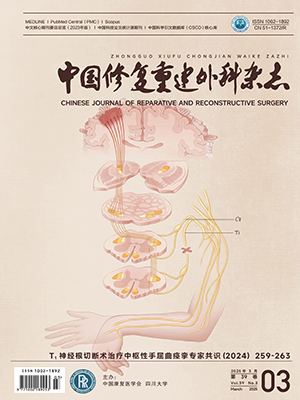OBJECTIVE To study the immunosuppressive effect of combined therapy with FK506 and RS-61443 in rat limb allotransplantation. METHODS: A total of 101 male SD rats were randomly divided into seven groups and used as recipients, and 101 Wistar rats were used as donors. All SD rats were performed limb allotransplantation without using immunosuppressants in control group. In experimental groups (Groups 1-6), the recipients were immunosuppressed with various dosages of FK506, RS-61443 or FK506 + RS61443, after transplantation for 5 weeks. To evaluate the results, we observed circulation of the transplanted limb, the mean rejection time, the histologic grading of skin rejection of limb grafts and the survival time of limb grafts. RESULTS: The control group showed rejection signs (edema and erythema of the skin) after a mean time of 3.36 +/- 1.15 days, and the mean survival time of the allografts was only 7.00 +/- 0.78 days. In the groups only using FK506 or RS-61443, the survival time were prolonged to varying degrees, but rejection occurred even in the period of using drug. As dosage increased, the rejection could not be prevented and the damage to liver and kidney could be induced. In the group using FK506 in combination with RS-61443, only skin and muscle of limb allografts showed slight rejection sign, function of liver and kidney was not obviously affected, the mean survival time of limb allografts was prolonged to 58.76 +/- 6.81 days. CONCLUSIONS: A combination of FK506 and RS-61443 is a more potent immunosuppressive agent than FK506 oro RS-61443 in preventing the rejection of limb allografts, and it can obviously prolong the survival time of limb allografts.
Citation: KANG Hao,HONG Guangxiang,WANG Fabin,et al.. COMBINED IMMUNOSUPPRESSION OF FK506 AND RS-16443 IN RAT LIMB ALLOTRANSPLANTATION. Chinese Journal of Reparative and Reconstructive Surgery, 2003, 17(3): 264-267. doi: Copy
Copyright © the editorial department of Chinese Journal of Reparative and Reconstructive Surgery of West China Medical Publisher. All rights reserved




